Postnatal development and maturation of layer 1 in the lateral prefrontal cortex and its disruption in autism
- PMID: 30867066
- PMCID: PMC6417186
- DOI: 10.1186/s40478-019-0684-8
Postnatal development and maturation of layer 1 in the lateral prefrontal cortex and its disruption in autism
Abstract
Autism is a neurodevelopmental connectivity disorder characterized by cortical network disorganization and imbalance in excitation/inhibition. However, little is known about the development of autism pathology and the disruption of laminar-specific excitatory and inhibitory cortical circuits. To begin to address these issues, we examined layer 1 of the lateral prefrontal cortex (LPFC), an area with prolonged development and maturation that is affected in autism. We focused on layer 1 because it contains a distinctive, diverse population of interneurons and glia, receives input from feedback and neuromodulatory pathways, and plays a critical role in the development, maturation, and function of the cortex. We used unbiased quantitative methods at high resolution to study the morphology, neurochemistry, distribution, and density of neurons and myelinated axons in post-mortem brain tissue from children and adults with and without autism. We cross-validated our findings through comparisons with neighboring anterior cingulate cortices and optimally-fixed non-human primate tissue. In neurotypical controls we found an increase in the density of myelinated axons from childhood to adulthood. Neuron density overall declined with age, paralleled by decreased density of inhibitory interneurons labeled by calretinin (CR), calbindin (CB), and parvalbumin (PV). Importantly, we found PV neurons in layer 1 of typically developing children, previously detected only perinatally. In autism there was disorganization of cortical networks within layer 1: children with autism had increased variability in the trajectories and thickness of myelinated axons in layer 1, while adults with autism had a reduction in the relative proportion of thin axons. Neurotypical postnatal changes in layer 1 of LPFC likely underlie refinement of cortical activity during maturation of cortical networks involved in cognition. Our findings suggest that disruption of the maturation of feedback pathways, rather than interneurons in layer 1, has a key role in the development of imbalance between excitation and inhibition in autism.
Keywords: Anterior cingulate cortex; Autism neuropathology; Feedback pathways; Inhibitory neuron; Laminar architecture; Postnatal axon myelination.
Conflict of interest statement
Ethics approval and consent to participate
The use of human post-mortem tissue for this study was approved by the Institutional Review Board (IRB) of Boston University. Experiments and procedures with animals were designed to minimize animal suffering and reduce the number of animals used. Detailed protocols of the procedures were approved by the Institutional Animal Care and Use Committee (IACUC) at Harvard Medical School and Boston University School of Medicine in accordance with NIH guidelines (DHEW Publication no. [NIH] 80–22, revised 1996, Office of Science and Health Reports, DRR/NIH, Bethesda, Maryland, United States).
Consent for publication
Not applicable.
Competing interests
The authors declare that they have no competing interests.
Publisher’s Note
Springer Nature remains neutral with regard to jurisdictional claims in published maps and institutional affiliations.
Figures
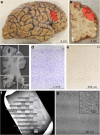
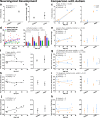
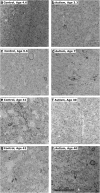
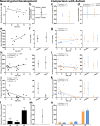

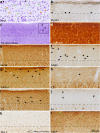

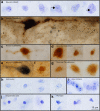
Similar articles
-
Imbalance of laminar-specific excitatory and inhibitory circuits of the orbitofrontal cortex in autism.Mol Autism. 2020 Oct 20;11(1):83. doi: 10.1186/s13229-020-00390-x. Mol Autism. 2020. PMID: 33081829 Free PMC article.
-
Opposite development of short- and long-range anterior cingulate pathways in autism.Acta Neuropathol. 2018 Nov;136(5):759-778. doi: 10.1007/s00401-018-1904-1. Epub 2018 Sep 6. Acta Neuropathol. 2018. PMID: 30191402 Free PMC article.
-
Distinct Physiological Maturation of Parvalbumin-Positive Neuron Subtypes in Mouse Prefrontal Cortex.J Neurosci. 2017 May 10;37(19):4883-4902. doi: 10.1523/JNEUROSCI.3325-16.2017. Epub 2017 Apr 13. J Neurosci. 2017. PMID: 28408413 Free PMC article.
-
Postnatal development of calcium-binding proteins immunoreactivity (parvalbumin, calbindin, calretinin) in the human entorhinal cortex.J Chem Neuroanat. 2003 Dec;26(4):311-6. doi: 10.1016/j.jchemneu.2003.09.005. J Chem Neuroanat. 2003. PMID: 14729133 Review.
-
Calcium-binding proteins in the human developing brain.Adv Anat Embryol Cell Biol. 2002;165:III-IX, 1-92. Adv Anat Embryol Cell Biol. 2002. PMID: 12236093 Review.
Cited by
-
Layer 1 neocortex: Gating and integrating multidimensional signals.Neuron. 2024 Jan 17;112(2):184-200. doi: 10.1016/j.neuron.2023.09.041. Epub 2023 Oct 31. Neuron. 2024. PMID: 37913772 Free PMC article. Review.
-
Neuroinflammatory Gene Expression Alterations in Anterior Cingulate Cortical White and Gray Matter of Males With Autism Spectrum Disorder.Autism Res. 2020 Jun;13(6):870-884. doi: 10.1002/aur.2284. Epub 2020 Mar 4. Autism Res. 2020. PMID: 32129578 Free PMC article.
-
Inhibition of striatal-enriched protein tyrosine phosphatase (STEP) activity reverses behavioral deficits in a rodent model of autism.Behav Brain Res. 2020 Aug 5;391:112713. doi: 10.1016/j.bbr.2020.112713. Epub 2020 May 24. Behav Brain Res. 2020. PMID: 32461127 Free PMC article.
-
Imbalance of laminar-specific excitatory and inhibitory circuits of the orbitofrontal cortex in autism.Mol Autism. 2020 Oct 20;11(1):83. doi: 10.1186/s13229-020-00390-x. Mol Autism. 2020. PMID: 33081829 Free PMC article.
-
MacroH2A1.2 deficiency leads to neural stem cell differentiation defects and autism-like behaviors.EMBO Rep. 2021 Jul 5;22(7):e52150. doi: 10.15252/embr.202052150. Epub 2021 May 27. EMBO Rep. 2021. PMID: 34046991 Free PMC article.
References
-
- Barbaria EM, Kohl B, Buhren BA, Hasenpusch-Theil K, Kruse F, Kury P, Martini R, Muller HW. The alpha-chemokine CXCL14 is up-regulated in the sciatic nerve of a mouse model of Charcot-Marie-tooth disease type 1A and alters myelin gene expression in cultured Schwann cells. Neurobiol Dis. 2009;33:448–458. doi: 10.1016/j.nbd.2008.11.014. - DOI - PubMed
Publication types
MeSH terms
Grants and funding
LinkOut - more resources
Full Text Sources
Miscellaneous

